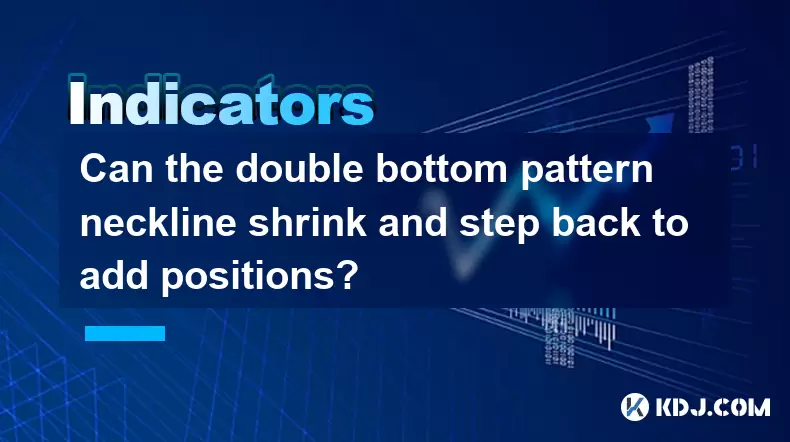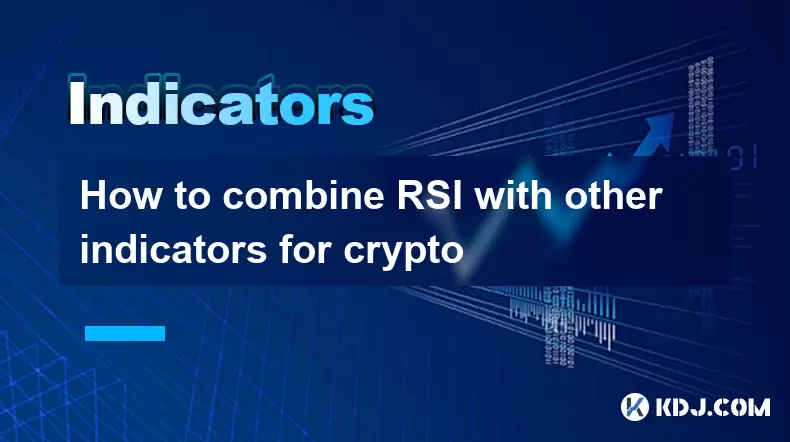-
 Bitcoin
Bitcoin $121,713.8152
3.06% -
 Ethereum
Ethereum $3,041.6437
2.42% -
 XRP
XRP $2.9499
5.12% -
 Tether USDt
Tether USDt $1.0000
-0.02% -
 BNB
BNB $704.1034
1.75% -
 Solana
Solana $166.7523
2.91% -
 USDC
USDC $0.9999
0.00% -
 Dogecoin
Dogecoin $0.2052
2.90% -
 TRON
TRON $0.3011
-0.47% -
 Cardano
Cardano $0.7461
1.42% -
 Hyperliquid
Hyperliquid $48.3650
1.12% -
 Stellar
Stellar $0.4548
3.52% -
 Sui
Sui $3.9527
14.50% -
 Chainlink
Chainlink $16.3300
5.87% -
 Bitcoin Cash
Bitcoin Cash $511.8016
1.25% -
 Hedera
Hedera $0.2395
1.40% -
 Avalanche
Avalanche $21.6526
2.06% -
 UNUS SED LEO
UNUS SED LEO $9.0073
-0.23% -
 Shiba Inu
Shiba Inu $0.0...01369
2.61% -
 Toncoin
Toncoin $3.0335
0.66% -
 Litecoin
Litecoin $96.6206
1.72% -
 Monero
Monero $355.1673
5.35% -
 Polkadot
Polkadot $4.0839
2.47% -
 Uniswap
Uniswap $9.3282
9.72% -
 Dai
Dai $0.9997
-0.01% -
 Ethena USDe
Ethena USDe $1.0004
-0.04% -
 Pepe
Pepe $0.0...01248
1.07% -
 Bitget Token
Bitget Token $4.4642
2.68% -
 Aave
Aave $325.0626
6.81% -
 Bittensor
Bittensor $418.1482
6.22%
Can the double bottom pattern neckline shrink and step back to add positions?
The double bottom pattern, resembling a "W," signals a potential downtrend reversal in crypto, confirmed by a breakout above the neckline.
Jul 15, 2025 at 01:42 am

Understanding the Double Bottom Pattern in Cryptocurrency Trading
The double bottom pattern is a widely recognized technical analysis formation used by traders to identify potential reversals from a downtrend to an uptrend. In the cryptocurrency market, where volatility is high and trends can shift quickly, mastering this pattern becomes essential for successful trading strategies. The pattern consists of two distinct lows formed at approximately the same price level, separated by a peak. This configuration resembles the letter "W" and signals that selling pressure has been exhausted.
When analyzing the double bottom, traders often focus on the neckline, which is drawn horizontally across the highest point between the two bottoms. A breakout above this neckline typically confirms the validity of the pattern and suggests that buyers are gaining control.
Important: The reliability of the double bottom increases when it forms after a prolonged downtrend and is accompanied by increased volume during the breakout.
Can the Neckline Shrink or Step Back?
One common question among crypto traders is whether the neckline can shrink or step back after being established. The short answer is yes, but with certain caveats. The concept of a shrinking or stepping-back neckline refers to a scenario where the price revisits the neckline area after breaking out, creating a retest or consolidation phase.
This behavior is not uncommon in highly volatile markets like cryptocurrency. When the price breaks above the neckline and then pulls back to test it as support, this can offer a second opportunity to enter a long position with potentially better risk-reward ratios.
- Shrinking neckline: Refers to a situation where the distance between the two bottoms becomes smaller over time.
- Stepping-back neckline: Indicates that the price temporarily retreats to a prior resistance-turned-support level before continuing its upward trend.
It's crucial to monitor volume during such retracements — if the pullback occurs on low volume, it may suggest a lack of selling pressure and reinforce the bullish case.
How to Identify a Valid Retest of the Neckline
Identifying a valid retest involves several key steps:
- Confirm the initial breakout: Ensure that the first move above the neckline was strong and ideally supported by rising volume.
- Watch for a clean pullback: A healthy correction should not fall below the original double bottom lows.
- Analyze candlestick patterns: Look for bullish reversal candles such as hammers or engulfing patterns near the neckline.
- Use additional indicators: Tools like moving averages or RSI can help confirm whether the asset is oversold or overbought during the retest.
Traders must avoid entering too early during the pullback. Waiting for a clear rejection at the neckline level provides a higher probability trade setup.
Adding Positions During a Neckline Retest
Experienced traders often use a neckline retest as an opportunity to add to their existing positions. This strategy allows them to average up their entry price while maintaining a favorable stop-loss location.
To execute this effectively:
- Determine your risk per trade: Never increase exposure without adjusting your stop-loss accordingly.
- Set clear profit targets: Use measured moves based on the height of the double bottom pattern to project upside potential.
- Place stops strategically: Consider placing a stop just below the second bottom or under the neckline if the retest holds.
- Monitor order flow: Watch for large buy orders or whale activity that might indicate institutional interest in the retest zone.
Proper position sizing and strict risk management are critical when adding to a winning trade.
Common Pitfalls and How to Avoid Them
Many traders fall into traps when dealing with double bottom patterns and their associated necklines. One major mistake is assuming that any W-shaped pattern qualifies as a double bottom. True double bottoms require well-defined lows and a clear neckline.
Another issue arises when traders ignore context. For example, a double bottom forming within a broader bearish trend may not carry the same weight as one appearing at a key support level or Fibonacci retracement zone.
- Avoid premature entries: Wait for confirmation before buying the pattern.
- Don't force patterns: Not every dip followed by a bounce is a double bottom.
- Be cautious of false breakouts: Some assets will fake out traders before resuming their downtrend.
Lastly, emotional trading can lead to poor decision-making. Stick to your plan and avoid chasing price after missing the initial breakout.
Frequently Asked Questions
Q: Is the double bottom pattern more reliable in specific cryptocurrencies?
A: While the double bottom appears across all crypto assets, it tends to be more reliable in larger-cap coins like Bitcoin and Ethereum due to their higher liquidity and stronger support/resistance levels.
Q: Should I always wait for a retest before entering a trade after a double bottom breakout?
A: No, waiting for a retest can sometimes cause you to miss the move entirely. It depends on your trading style — aggressive traders may take the breakout, while conservative ones prefer a retest.
Q: Can the double bottom pattern fail even after a successful breakout?
A: Yes, no pattern offers 100% accuracy. Even after a confirmed breakout, unexpected news or macroeconomic events can invalidate the pattern and push prices lower again.
Q: What timeframes work best for identifying double bottom patterns?
A: Higher timeframes like 4-hour or daily charts tend to produce more reliable double bottom formations compared to shorter intervals, which are prone to noise and false signals.
Disclaimer:info@kdj.com
The information provided is not trading advice. kdj.com does not assume any responsibility for any investments made based on the information provided in this article. Cryptocurrencies are highly volatile and it is highly recommended that you invest with caution after thorough research!
If you believe that the content used on this website infringes your copyright, please contact us immediately (info@kdj.com) and we will delete it promptly.
- Ethereum, 2025 Prediction & Ozak AI: Are New?
- 2025-07-15 06:30:12
- Bitcoin Blasts Past $122K: CZ Binance's ATH Future Vision
- 2025-07-15 06:30:12
- Metaplanet's Crypto Playbook: Asia Treasuries and the Bitcoin Standard
- 2025-07-15 06:35:12
- Token Buybacks & Altcoin Developers: Navigating Market Tokens in the Wild West
- 2025-07-15 04:30:12
- BlockDAG, X1 App, and Litecoin Outlook: A 2025 Mid-Year Crypto Surge?
- 2025-07-15 05:30:12
- Bitcoin Blasts Past $120K: How US Policy is Fueling the Crypto Craze
- 2025-07-15 04:30:12
Related knowledge

Advanced RSI strategies for crypto
Jul 13,2025 at 11:01am
Understanding the Basics of RSI in Cryptocurrency TradingThe Relative Strength Index (RSI) is a momentum oscillator used to measure the speed and chan...

Crypto RSI for day trading
Jul 12,2025 at 11:14am
Understanding RSI in the Context of Cryptocurrency TradingThe Relative Strength Index (RSI) is a momentum oscillator used to measure the speed and cha...

Crypto RSI for scalping
Jul 12,2025 at 11:00pm
Understanding RSI in the Context of Crypto TradingThe Relative Strength Index (RSI) is a momentum oscillator widely used by traders to measure the spe...

What does an RSI of 70 mean in crypto
Jul 13,2025 at 06:07pm
Understanding the RSI Indicator in Cryptocurrency TradingThe Relative Strength Index (RSI) is a widely used technical analysis tool that helps traders...

How to avoid RSI false signals in crypto
Jul 13,2025 at 06:21pm
Understanding RSI and Its Role in Crypto TradingThe Relative Strength Index (RSI) is a momentum oscillator used to measure the speed and change of pri...

How to combine RSI with other indicators for crypto
Jul 12,2025 at 08:35am
Understanding the Role of RSI in Crypto TradingThe Relative Strength Index (RSI) is a momentum oscillator that measures the speed and change of price ...

Advanced RSI strategies for crypto
Jul 13,2025 at 11:01am
Understanding the Basics of RSI in Cryptocurrency TradingThe Relative Strength Index (RSI) is a momentum oscillator used to measure the speed and chan...

Crypto RSI for day trading
Jul 12,2025 at 11:14am
Understanding RSI in the Context of Cryptocurrency TradingThe Relative Strength Index (RSI) is a momentum oscillator used to measure the speed and cha...

Crypto RSI for scalping
Jul 12,2025 at 11:00pm
Understanding RSI in the Context of Crypto TradingThe Relative Strength Index (RSI) is a momentum oscillator widely used by traders to measure the spe...

What does an RSI of 70 mean in crypto
Jul 13,2025 at 06:07pm
Understanding the RSI Indicator in Cryptocurrency TradingThe Relative Strength Index (RSI) is a widely used technical analysis tool that helps traders...

How to avoid RSI false signals in crypto
Jul 13,2025 at 06:21pm
Understanding RSI and Its Role in Crypto TradingThe Relative Strength Index (RSI) is a momentum oscillator used to measure the speed and change of pri...

How to combine RSI with other indicators for crypto
Jul 12,2025 at 08:35am
Understanding the Role of RSI in Crypto TradingThe Relative Strength Index (RSI) is a momentum oscillator that measures the speed and change of price ...
See all articles

























































































